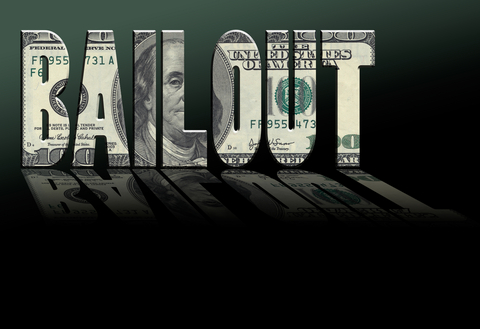Tax payers in the United States are set to experience more pain as they foot the bill for auto industry bailouts. It is estimated that the 2008 to 2009 automotive bailouts amounted to around $25 billion. This is a 25% increase on previous figures that were published in an earlier forecast. For the most part, these figures represent a substantial downturn in the stock price of General Motor Co (GMN).
The story began in 2008 with the Bush administration, and once President Barack Obama took office in 2009, the US’s domestic economy was experiencing a deep recession. This led to the US treasury investing $85 billion to ensure the survival of industry within the US. Primarily, this was to help Chrysler and GM’s post bankruptcy turnarounds.
According to Barack Obama, in spite of claiming record profits to the tune of $7.6 billion which were the highest in the company’s 100 year history, GM paid a grand total of $0.00 in federal income taxes. In fact, GM actually paid a negative tax rate on its unprecedented profits of 1.5%.
This has understandably caused GMN to become unpopular amongst some American tax payers. As they paid their income taxes, GM received $110 million from the IRS. GM has been given a tax break for the next twenty years while US workers reluctantly pick up the slack.
President Barack Obama has been vocal in his defence of the bailout, stating that in the long-term, allowing Chrysler and GM to go bankrupt would have certainly cost substantially more in terms of any losses that might have been sustained by the Treasury.
Matt Anderson, spokesman for the Treasury has also continued his staunch defence of the bailout. He insists that the rescue of the automotive industry has actually saved in excess of a million US jobs. He maintains that the cost is expected to be significantly lower than many had anticipated while the economic crisis was at its height.
So far, Chrysler has managed to pay back the money received from the Obama Administration, but it is worth noting that this does not include the $1.3 billion granted by the Bush Administration.
The last few months have seen automotive shares tumbling, and GM is taking the brunt of this. The government’s loss forecast of $25 billion was based on stock prices for May 2012. At that time the stock price was $22.20. However, in the last month stock prices were just $19 per share.
Although General Motors sold off over half the shares that were held by US tax payers in 2010, the Treasury remains GM’s largest stockholder with over 500 million shares or 26%. Stock prices for GM shares would have to hit $53 billion in order for the US government to break even.
Although the bailout initially came about in the Bush administration, it is now becoming an issue during the current election. Mitt Romney, GOP presidential candidate came out in opposition to the bailout back in 2008 and 2009. He has changed his tune somewhat since then, as he is now claiming credit for helping set up the framework for Chrysler and General Motor’s successful emergence from bankruptcy.
Although these recent figures have caused some controversy, many advocates maintain that the current success of these companies is tangible proof that the bailouts have accomplished what they set out to achieve. Potentially, the economy could have taken a far greater hit which could have resulted in estimated job losses of up to 1.5 million. Yet more jobs could have been lost overseas if Chrysler, GM and their suppliers had been allowed to fail.

